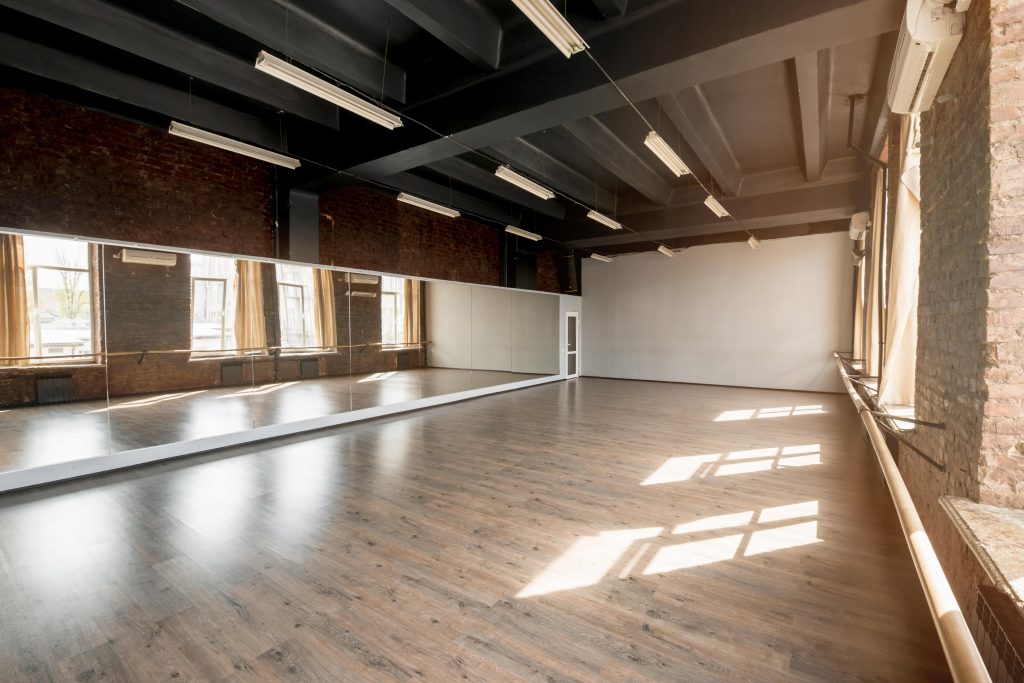Where Can You Train Your Clients as a Personal Trainer?
Trainer GuideIf you’re a certified personal trainer ready to take control of your career, you might be asking the big question: Where can you train your clients as personal trainer? Whether you’re just getting started or looking to expand your business, understanding your options is critical.
From gyms that allow private personal trainers to dedicated personal training studios, there are more choices than ever for fitness professionals seeking the perfect space to build their brand.
In this comprehensive guide we’ll walk you through the most popular places to train your clients as a personal trainer and will help you choose the right one.
Table of Contents
- Why Your Training Location Matters
- Places to Train Your Clients as a Personal Trainer
- How to Choose the Best Option for You

Why Your Training Location Matters
Before exploring your options, it’s important to understand how much your training environment can shape your business. The space where you train clients isn’t just a backdrop; it influences:
- The overall client experience
- How your brand is perceived
- Your earning potential and business expenses
- Your scheduling flexibility
- The quality and variety of equipment available
As a personal trainer, you’re offering more than just a workout; you’re delivering a service, a relationship, and a lifestyle. The location you choose should reflect the professionalism, quality, and value that clients expect from you.
Places to Train Your Clients as a Personal Trainer
As a personal trainer, where you work can significantly impact your business and your clients’ success. From traditional gyms to more flexible and unconventional settings, each option offers unique benefits. Let’s explore the most common places where you can train your clients.
1. Commercial Gyms That Allow Independent Personal Trainers
For many trainers, starting at a commercial gym seems like the obvious path, but not all gyms welcome outside professionals. However, there are gyms that allow private personal trainers to rent space and bring in their own clients. These arrangements are typically fee-based or commission-based.

Benefits of using commercial gyms as an independent trainer:
- Fully equipped spaces, often with high-end machines and amenities
- No need to invest in your own gym equipment
- A professional atmosphere that helps with client trust
However, this model can come with restrictions:
- Schedules may be limited depending on gym availability
- Some gyms take a significant cut of your earnings
- You’re subject to the facility’s rules, policies, and insurance requirements
Before committing, verify whether a gym near you actually allows this setup. Searching for “gyms that allow independent trainers” or speaking directly with local gym managers can clarify your options.
2. Rent Gym Space for Personal Training
If you want more control over your schedule and business model but still need access to a professional environment, you might choose to rent gym space for personal training. This model is becoming increasingly common as more fitness facilities open their doors to freelancers.
You can typically rent space by the hour, day, or month. This gives you flexibility, especially if you’re scaling up slowly or testing out the market in a new city.
Why trainers choose this model:
- Flexible usage,only pay for what you need
- Retain full control over your business and rates
- Operate under your own brand name, not the gym’s
The downside? You’re responsible for:
- Your own marketing and promotion
- Managing business insurance
- Handling client scheduling and communication
- Providing smaller equipment when the gym doesn’t supply it
3. Personal Training Studios
Personal training studios offer a middle ground between renting gym space and owning your own fitness business. These spaces are specifically designed for personal training, typically in private or semi-private formats. They provide a professional setting without the constraints of corporate gyms, allowing trainers more freedom and flexibility.

Why choose a studio?
- For Clients: The environment is quiet, focused, and free of distractions—ideal for a more personalized training experience.
- For Trainers: Studios are tailored to the needs of personal trainers, helping you deliver better sessions and build stronger client relationships.
Community and Collaboration
Many studios host multiple independent trainers working under the same roof. While you may pay rent or a share of your earnings, you also become part of a community. This collaborative environment can lead to accountability, professional growth, and potential client referrals.
Finding a Studio
To locate options in your area, search online for “personal training studios near me.”
4. Outdoor & Public Space Training
Outdoor training has become a viable, even preferred, format for many trainers and clients. City parks, community tracks, or open green spaces can serve as informal fitness areas, giving clients a refreshing break from indoor workouts.
Training outside can reduce your operating costs to zero. There’s no rent, no electricity bills, and no shared equipment. It’s ideal for trainers who focus on bodyweight training, high-intensity interval training (HIIT), or functional movement workouts.
Still, there are factors to consider:
- Weather limitations can cancel or reschedule sessions
- Some cities require permits for commercial use of public parks
- You’ll need to bring portable equipment for variety and progression
5. In-Home Personal Training
Bringing your services directly into clients’ homes can be a powerful selling point, especially for busy professionals, new parents, or older adults. In-home training delivers unmatched convenience and privacy, which means you can often charge a premium.
This approach eliminates overhead and helps build close client relationships. But it also presents logistical challenges:
- Travel time and cost between appointments
- Carrying or transporting portable equipment
- Safety considerations (yours and your client’s)
6. Online Training

With advancements in video technology and online platforms, virtual personal training has grown far beyond its early days. Trainers now reach clients across cities, time zones, and even countries, without ever leaving their home or studio.
Virtual training can be through platforms like SuperCoach, or by using pre-recorded workouts and app-based progress tracking. It’s a flexible option that helps reduce costs for both trainers and clients, and it makes it easier to scale your business. You can work with more people, without being limited by location or studio space.
Want to know more about the benefits of online training?
It also comes with some challenges:
- You can’t provide hands-on guidance or physical spotting
- It depends on having a solid internet connection and some tech confidence
- Some clients may find it harder to stay motivated without the accountability of in-person sessions
How to Choose the Best Option for You
When deciding where to train your clients, consider these key questions:
- What’s your budget? Can you manage a monthly rent, or would a pay-per-session model be more practical?
- Who are your clients? Are you working with busy professionals, athletes, seniors, or people who enjoy group workouts?
- How much control do you need? Are you comfortable following a gym’s rules, or do you prefer full independence?
- What are your long-term goals? Do you envision expanding with a team of trainers, or are you planning to work solo?
- Do you prefer online or in-person training? Would you rather connect with clients virtually, or do you thrive on face-to-face interaction?
Want to know the difference between online and In person training?
Finally, choosing where to train your clients is one of the most important decisions you’ll make as a personal trainer. Each option,whether it’s a commercial gym, private studio, public park, home visit, or online platform,offers unique advantages and challenges. Your ideal setup will depend on your goals, your clients’ needs, and how much control you want over your business.
By understanding all the available options and evaluating them through the lens of your personal and professional priorities, you can find the right environment to grow your brand, help your clients effectively, and build a sustainable career.
The right space isn’t just about equipment or location, it’s about creating the best possible experience for both you and the people you train.
